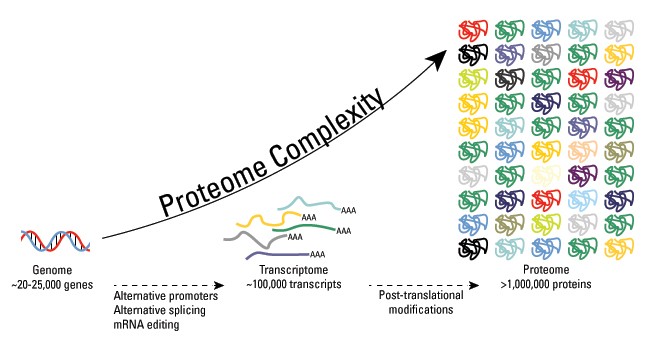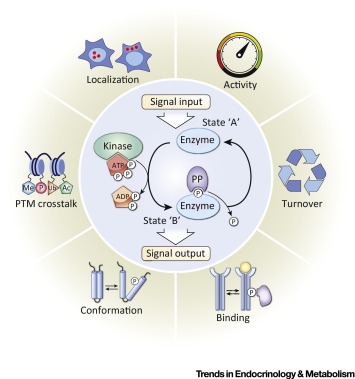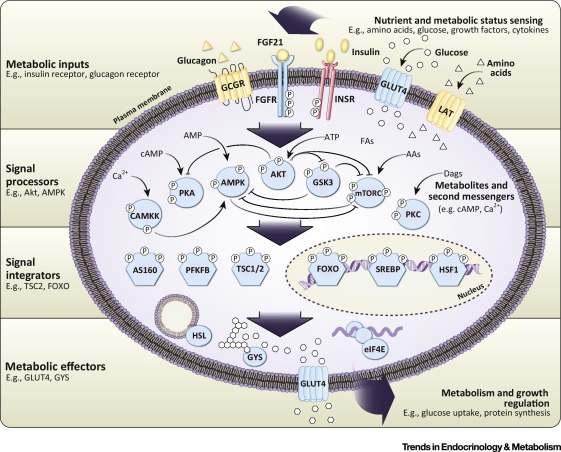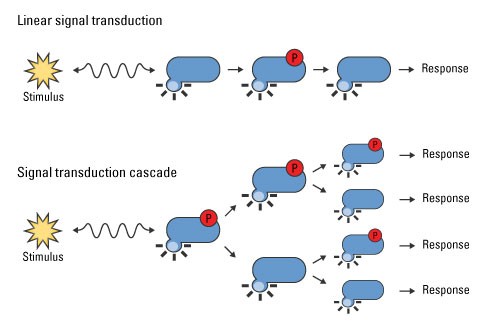Introduction
PTM

Post-translational modification (PTM) serves as molecular switch mechanism, modulating diverse protein functions including enzymatic activity, protein turnover, interactions, conformation, localization, and crosstalk with other PTMs, which in turn regulate broad cellular biological functions.
These modifications include phosphorylation, glycosylation, ubiquitination, nitrosylation, methylation, acetylation, lipidation and proteolysis.
Phosphorylation

Phosphorylation is the most common mechanism of regulating protein function and transmitting signals throughout the cell.
Reversible Protein Phosphorylation Is a Molecular Switch Mechanism. Reversible protein phosphorylation is characterized by the addition of phosphate donated from ATP and the removal of phosphate from a phosphorylated protein substrate, catalyzed by protein kinase and phosphatase (PP) enzymes respectively.
蛋白质磷酸化主要发生在两种氨基酸上,一种是丝氨酸Ser S(包括苏氨酸Thr T),另一种是酪氨酸Tyr Y。这两类酸磷酸化的酶不一样,功能也不一样,但也有少数双功能的酶可以同时作用于这两类氨基酸,如MEK(促丝裂原活化蛋白激酶激酶mitogen-activated proteinkinase kinase ,MAPKK)。大于90%的蛋白质磷酸化组由丝氨酸磷酸化(pS)和苏氨酸磷酸化(pT)组成,三种氨基酸的磷酸化在同一个细胞中相对丰度比例为 pS:pT:pY = 1800:200:1,大约占84%, 15%, and <1%。尽管pY所占比例最少,但酪氨酸激酶受体(RTKs)在人类疾病中的异常调控,使其研究一直处于pS和pT前面。
Signal Transduction Cascades

细胞通过其表面的受体,离子通道和转运蛋白实时监控胞内微环境,且细胞面表受体和转运蛋白具有细胞特异性,使得其能够对胞内或胞外刺激做出快速反应。细胞表面的受体在感知到刺激后激活下游激酶,使发生磷酸化和激活下游同类型底物传递信号。
依赖于蛋白质磷酸化的信号传递的强度和持续时间由3方面决定:
Protein phosphorylation sites
在一个给定的细胞中拥有成千上万的磷酸化位点:
Dephosphorylation
Dephosphorylation is the end goal of these two groups of phosphatases, they do it through separate mechanisms.
Serine/threonine phosphatases mediate the direct hydrolysis of the phosphorus atom of the phosphate group using a bimetallic (Fe/Zn) center, while tyrosine phosphatases form a covalent thiophosphoryl intermediate that facilitates removal of the tyrosine residue.
参考资料
Phosphorylation
Protein Phosphorylation: A Major Switch Mechanism for Metabolic Regulation
